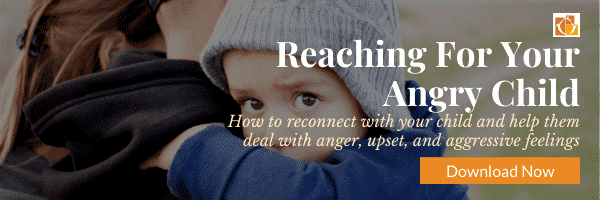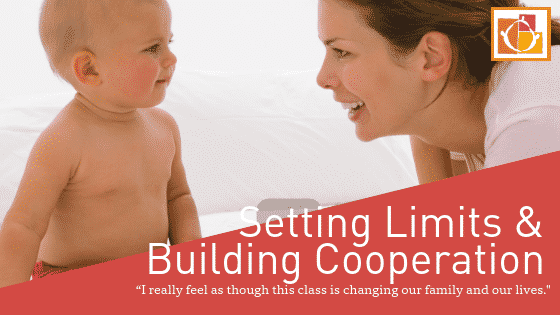![]()
“Are your parents strict?”
Remember when that was all anyone asked about parents?
Now we have dozens of labels, from gentle and calm parenting to authoritative and authoritarian.
We have tiger moms, and helicopter moms, we have free-range parenting, positive parenting, peaceful parenting, even unparenting.
Hand in Hand's approach is based on connection.
But what is that?
What's connection parenting?
 “Your child has a unique and wondrous mind. But to function well, her developing mind needs a sense of close connection with you as surely as she needs food, shelter, cleanliness, and sleep,” Patty Wipfler says, in the opening chapters of her book, Listen, Five Simple Tools to Meet Your Everyday Parenting Challenges.
“Your child has a unique and wondrous mind. But to function well, her developing mind needs a sense of close connection with you as surely as she needs food, shelter, cleanliness, and sleep,” Patty Wipfler says, in the opening chapters of her book, Listen, Five Simple Tools to Meet Your Everyday Parenting Challenges.
In the book, Patty, Hand in Hand Parenting's founder, presents five listening tools that are the hallmark of this approach.
Outlining the brain-science that informs it, Patty explains how the developing brain relies on close connections to grow.
“Every positive interaction helps a child reach her full potential today, and for decades to come,” she says.
Hand in Hand's tools foster that support, interest, and close connection.
Regular sessions of Special Time and playful responses do much to build connections and avoid large meltdowns.
When Connection Cracks
But when a child acts out, when they throws things, or bite, or whine “It's not fair!” that's dis-connection.
Your child is asking for your attention. And it's not to anger or disrupt you but to help them back to a brighter, more positive and secure place.
Off-track behavior occurs when a child's connection gets broken. It's caused by big trauma as well as life's daily stressors.
Whatever the cause, at that point the brain enters a “fight, fight or freeze” state and your child's thought processes shut down.
That's why asking questions or demanding answers so rarely works when your child is already upset.
It's why they can listen to explanations and why they battle against your suggestions.
It's why they hit and kick and scream when you try.
It's why you may see your child cover their ears, or close their eyes tight, or try and run from you and crawl into a place they can hide.
By that point, your logic or reasoning, no matter how earnest or sympathetic goes unheard.
And this is why Hand in Hand's approach avoids punishments, shaming and threats.
Because what does feel unfair is asking a child for compliance in times of upset. In fight, fright or freeze.
Instead, we encourage you to help your child release their pent up tension through play and laughter, or, if they have reached upset, by allowing that tantrum or tears to play out until your child gets calm.
Once they are calm, their brain recovers and reasoning comes back online.
To some, these responses seem to be as revolutionary as to be impossible. But, after 30 years using them, we know that they are remarkably transforming.
Take a closer look at how they work in action.
Q: What does Hand in Hand think about time outs?
A: On the surface, time outs seem sensible. They give everyone a chance to calm down. Supposedly, they teach kids a lesson. But any child can explain to you that timeouts ARE punishment, not any different than when you were made to stand in the corner as a child. And any time you punish a child, you make him feel worse about himself.
Off-track behavior happens when a child feels disconnected, so the best way to nip it in the bud is to spend time connecting regularly.
Which tools help? Special Time gives you regular moments to reconnect and listen to your child, with the pressure off.
Read more in What's Wrong with Time Outs for Children?
Q. How can you help a child that hits, bites or is aggressive if you don't do time-outs?
A: An aggressive child is a frightened child.
Aggression is the associated “fight or flight” response that leads a child to act out.
Unless there is an immediate threat, the fear most likely comes from another incident from some time back in the child’s past – perhaps something that happened when they were just an infant.
When we offer caring toward a child who hits or hurts another, we’re not condoning aggressive behaviour. Far from it! We’re finding ways to ensure no more aggression gets spilled out.
Which tools help? Playlistening uses humor to relieve light tension. Setting warm limits may give a child what he needs to resist against to release his emotions.
Read More: How to Help a Child With Aggressive Behaviors
And get this guide, free here.

Q: Does that mean Hand in Hand is a permissive parenting approach?
A: We are an authoritative style, where connection is highly valued and limits are set with compassion.
In fact, we believe in limits so much that setting them is one of our core five parenting tools.
“Kids need boundaries and limits to feel safe,” says Sarah Maclaughlin, a social worker and child behavior specialist. But you can learn to set limits without threats, bribes or consequences.
Which Tools Help? Setting Limits. You can get this guide to print out and keep
And learn from our experts in this online class. Find out more

Q: How can I manage tantrums and crying without consequences or punishments?
A: Tantrums and crying signal a child's need for help. Tantrums come with the territory when you have children but most of us are taught to try and keep children quiet when they cry, by shushing or bribing.
Unless a child is obviously hungry, hurting or tired, Hand in Hand sees emotions as a welcome and necessary release, a time to offload tension and stress.
The most helpful course of action is letting these tantrums play out until your child is able to calm. Unfortunately for parents, these outbursts often happen at the most frustrating times – when we are rushing to pick up groceries, as you attempt to serve dinner or at bedtime.
Which tools help? Staylistening is your go-to here. To do this, stay close and give occasional words of comfort until your child is feeling better. Parents see a radical change in their children's attitudes once a tantrum reaches its natural conclusion as kids regain their brightness and keen willingness to please.
Read more about emotional release in Your Ultimate Guide to Tantrums
Q: Your Staylistening tool encourages crying. Isn't that the same as Cry It Out?
A: Hand in Hand does not support CIO strategies, where parents leave their children to cry alone.
Stay very close to your child when he is crying, but listen for about 75 per cent of the time he is upset, adding sprinklings of warm words and comfort now and then in between.
This allows your child to blast off big feelings that are weighing heavy, knowing they can be comfortable in your loving presence.
The message here is that you will always be there, not that you will only be when he is happy and coping with life well.
What tools help? Staylistening. Read this article about the difference between Staylistening and Cry-It-Out.
From the Hand in Hand Toolbox:
Discover how your child's mind really works in Do Children Manipulate Their Parents?
Need help with biting, kicking or aggression? Read this